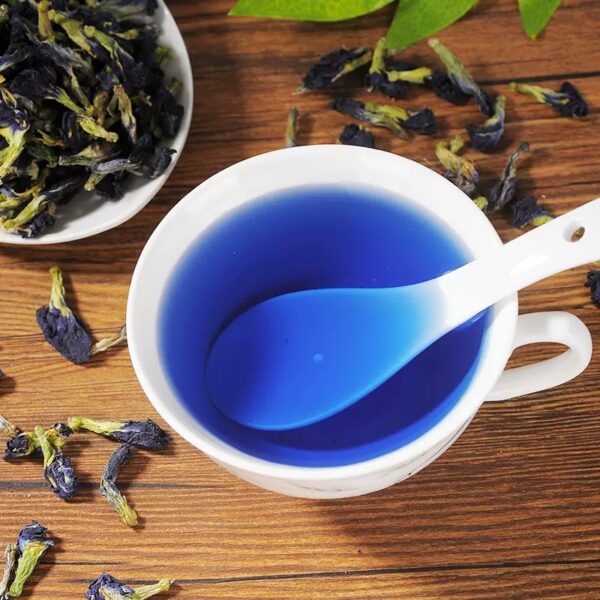
# Blue Tea: A Refreshing and Unique Beverage Experience
## What is Blue Tea?
Blue tea, also known as butterfly pea flower tea, is a caffeine-free herbal infusion made from the dried petals of the Clitoria ternatea plant. This vibrant beverage originates from Southeast Asia and has gained global popularity due to its stunning blue color and potential health benefits.
## The Science Behind the Color
The striking blue hue of this tea comes from anthocyanins, the same natural pigments found in blueberries and red cabbage. What makes blue tea particularly fascinating is its pH-sensitive nature:
– Acidic environments (like lemon juice) turn it purple
– More alkaline solutions can make it appear greenish
– The natural blue color appears in neutral pH conditions
## Health Benefits of Blue Tea
While research is ongoing, blue tea is believed to offer several potential health benefits:
### 1. Rich in Antioxidants
The anthocyanins in blue tea act as powerful antioxidants that may help combat oxidative stress in the body.
### 2. May Support Brain Health
Some studies suggest compounds in butterfly pea flowers may enhance memory and cognitive function.
### 3. Natural Stress Reliever
Many drinkers report that blue tea has a calming effect, making it an excellent choice for relaxation.
## How to Prepare Blue Tea
Making blue tea is simple:
1. Bring water to a boil (about 200°F or 93°C)
2. Add 5-7 dried butterfly pea flowers per cup
3. Steep for 5-7 minutes
4. Strain and enjoy hot or chilled
For an extra flavor dimension, try adding:
– Lemon or lime (which will change the color to purple)
– Honey or agave for sweetness
– Mint leaves for freshness
## Creative Ways to Enjoy Blue Tea
Beyond drinking it straight, blue tea offers numerous possibilities:
Keyword: blue tea
Cocktail Mixer
Its color-changing properties make it a favorite among mixologists for creating visually stunning cocktails.
Color-Changing Lemonade
Layer blue tea over lemonade to create a mesmerizing gradient effect that changes as you drink.
Culinary Applications
Use blue tea to naturally color rice dishes, desserts, or even cocktails without artificial dyes.
## Where to Find Blue Tea
Blue tea is becoming increasingly available:
– Specialty tea shops
– Health food stores
– Online retailers
– Some Asian grocery stores
When purchasing, look for organic, high-quality dried butterfly pea flowers to ensure the best flavor and color.
## Final Thoughts
Blue tea offers more than just a pretty color – it’s a versatile, healthy beverage that can be enjoyed in countless ways. Whether you’re looking for a caffeine-free alternative, a natural food coloring, or simply want to try something new, blue tea is worth exploring. Its unique properties and potential health benefits make it stand out in the world of herbal teas.
Comments are closed